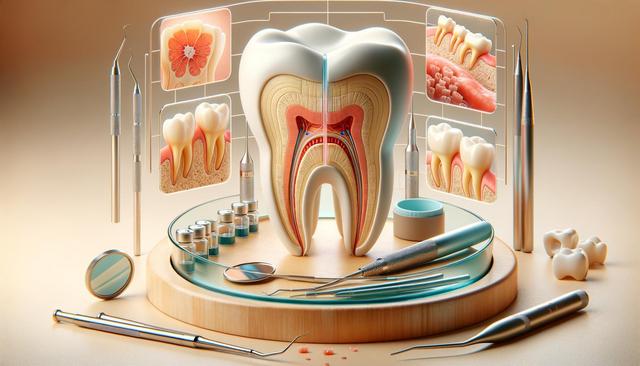Recognizing the Signs You May Need a Root Canal
Tooth discomfort can stem from various causes, but certain symptoms strongly suggest the need for a root canal. Recognizing these early signs can help you seek timely treatment and avoid further complications. Common signs that indicate you may need a root canal include:
- Persistent toothache, especially when chewing or applying pressure
- Prolonged sensitivity to hot or cold temperatures
- Darkening or discoloration of the tooth
- Swelling or tenderness in the nearby gums
- A recurring or persistent pimple on the gums
These symptoms often occur when the tooth’s pulp becomes infected or inflamed. Without treatment, the infection can spread, leading to abscesses or even bone loss. Consulting a dentist at the first sign of trouble ensures better outcomes and may preserve your natural tooth.
How Root Canal Treatment Saves Damaged Teeth
Often misunderstood, a root canal is a methodical and effective way to save a tooth that would otherwise require extraction. At its core, how root canal treatment saves damaged teeth lies in its ability to remove infected tissue while maintaining the tooth structure. The process typically involves:
- Removing the infected or inflamed pulp
- Cleaning and disinfecting the inner chamber
- Filling the space with a biocompatible material
- Sealing the tooth to prevent future infection
This approach not only alleviates pain but also retains functionality and appearance. With proper care, a tooth restored through a root canal can last as long as natural teeth. It’s an essential part of modern endodontic care aimed at preserving oral health and avoiding more invasive procedures.
What to Expect During a Root Canal Procedure
If you’re scheduled for this treatment, understanding what to expect during a root canal procedure can help reduce anxiety. Thanks to advancements in dental technology and anesthesia, the experience is far more comfortable than many anticipate. During the procedure:
- Local anesthesia is used to numb the area completely
- A dental dam is placed to keep the area dry and free from saliva
- The dentist creates a small opening to access the pulp chamber
- Infected tissue is removed using specialized instruments
- The canal is filled, sealed, and often covered with a crown
This process is typically completed in one or two appointments. Most patients compare the discomfort to that of getting a standard filling. Modern techniques for painless root canal therapy have significantly improved the patient experience, making it a manageable and often relief-providing procedure.
Exploring Endodontic Treatment Options for Tooth Pain
When it comes to addressing dental pain, particularly related to the pulp or nerve of the tooth, several endodontic treatment options for tooth pain are available. While root canals are the most common, other alternatives may be considered depending on the severity and location of the issue. These include:
- Direct pulp capping for minor exposures
- Pulpotomy, often used in pediatric cases
- Apicoectomy, a surgical option for persistent infections
- Tooth extraction, as a last resort
The choice of treatment depends on factors such as the extent of damage, patient health, and long-term prognosis. Consulting with an endodontist—a specialist in treating the inside of teeth—can provide clarity on the most suitable path forward. The goal is always to relieve pain while preserving as much of the natural tooth as possible.
Recovery Tips After a Root Canal
Healing properly after a root canal is key to long-term success. Following recovery tips after a root canal can help minimize discomfort and ensure the treated tooth remains healthy. Here are some practical guidelines:
- Avoid chewing on the treated side until the final restoration is placed
- Take prescribed medications as directed to manage pain and prevent infection
- Use a soft-bristled toothbrush and maintain good oral hygiene
- Attend follow-up appointments to monitor healing and place a crown if needed
Most patients experience mild soreness for a few days, which typically resolves with over-the-counter pain relievers. If swelling, persistent pain, or signs of infection occur, it’s important to contact your dentist promptly. Adhering to these aftercare steps helps ensure the longevity of the treated tooth and supports overall dental health.
Conclusion: A Valuable Step Toward Lasting Oral Health
Root canal therapy plays a vital role in maintaining natural teeth and alleviating significant discomfort. By understanding how root canal treatment saves damaged teeth and knowing what to expect during a root canal procedure, patients can approach the treatment with more confidence. Awareness of the signs that indicate you may need a root canal and the range of endodontic treatment options for tooth pain empowers individuals to seek help early. With the aid of modern techniques for painless root canal therapy and proper recovery tips after a root canal, the journey to restored dental health is smoother than ever. Investing in this treatment can ensure a healthy, functional smile for years to come.




Leave a Reply